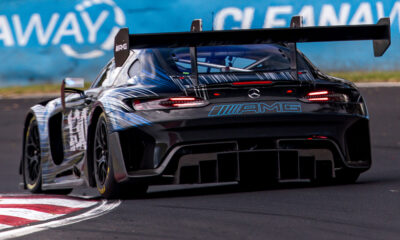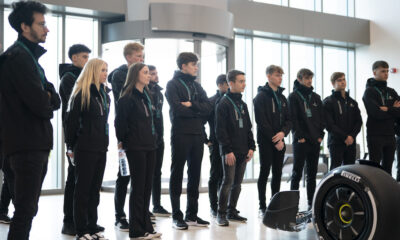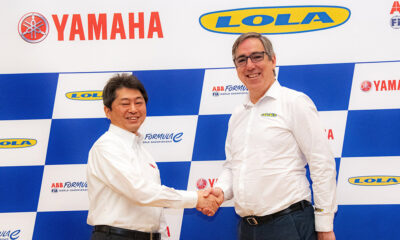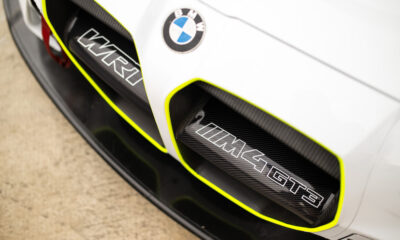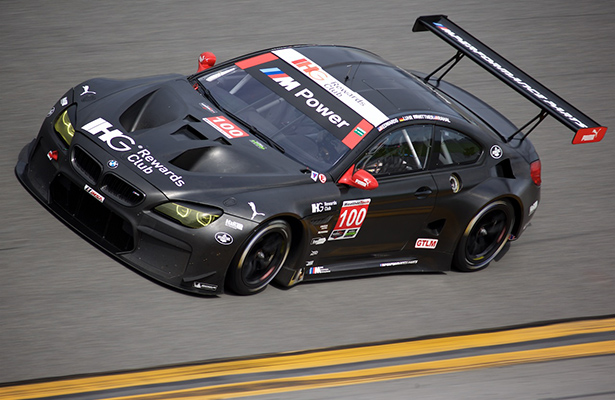
Photo: John Dagys
Next weekend’s Rolex 24 at Daytona will mark the start of a new era for BMW, as it debuts the M6 race car, both in GTLM and GT3 trims, in the IMSA WeatherTech SportsCar Championship season-opener.
Built and developed by BMW Motorsport in Germany, the new-generation GT contender marks a significant departure from the Z4, both in appearance and performance, with virtually zero carryover between the two cars.
The M6 not only features an all-new, production-based turbo engine, but also a completely new, larger chassis that’s not remotely comparable to the compact Z4 package.
According to BMW Team RLL technical director Jay O’Connell, who has overseen the team’s transition to the M6 GTLM variant, 2016 represents a clean sheet of paper in nearly every area.
“It’s really a reset for us,” O’Connell told Sportscar365. “We’ve been working closely with BMW on this new car since last July.
“We had mechanics overseas building up the test car and right after Petit [Le Mans] we were in Europe, working with them and getting up to speed on one of the tests.”
While both GTLM and GT3 cars went through the FIA’s mandatory Balance of Performance tests in Ladoux in September, BMW Team RLL began its U.S.-based development program in November, with tests at both Daytona and Sebring.
It was there where the Bobby Rahal-led factory team was able to notice the significant differences in handling — and to some extent performance — from its predecessor.
“The wheelbase is longer,” O’Connell said. That changes the dynamics of the car. It’s more stable under braking, a little more challenging getting in the pit box.
“But I think it’s made the car a little less pitch sensitive than the Z4. The car’s got more inherent stability because of it.
“With all of the rules changes, there’s more downforce on the car than the Z4. it’s got a bigger diffuser, it’s got vertical fins.
“The common thing is the tires, as they’re the same size as on the Z4.”
Powered by a 4.4-liter twin-turbo V8, the M6 is the first turbocharged BMW race engine for the GTLM/GT3 regulations, which O’Connell admitted has taken some time to fully come to grips with.
“It’s certainly a challenge for BMW and our team because it’s a new dynamic,” he said.
“We’re [now] trying to look at boost vs RPM and trying to not go over the limit at any point, and trying to make sure it drives as close to a normally aspirated engine as possible.
“The drivers want that instantaneous response and it’s hard to get that all the time.
“But there’s always a learning process and things you can do with the calibration to change the lag strategy.
“Perhaps the other guys that have been on turbocharged engines [for a while] have an advantage but we’ve made a lot of strides in that area in the last three months.”
O’Connell noted that the drivers were much happier with the car at the Roar Before the Rolex 24 than its initial test at Daytona in November.
“I think the change in stability [is a benefit],” he said. “The M6 has more torque than a naturally aspirated Z4. I think they feel the powertrain differences more than the chassis differences.”
The M6 is the third different BMW model that Bobby Rahal’s team has run, and according to the legendary team owner, it’s been the most complex, yet boasts the biggest potential.
“It’s a much more sophisticated car from the Z4, in terms of the electronics and the twin turbo. But overall, we’ve been really pleased with the progress made so far,” Rahal told Sportscar365.
“We had problems with the M3 in the first couple of races. The Z4 was such a well-proven car that by the time we got it — from all the GT3 experience — that was kind of a no-brainer in in some respects.
“But the M6 is to a higher level, in terms of complexity and sophistication compared to the previous two models we’ve had.
“I think it’s a better car because of that, but it’s created complexion that we hadn’t had to deal with with any other previous model.”
For the first time, BMW’s GTLM and GT3 models are launching simultaneously, and as it turns out, there’s very little difference between the two platforms.
The GT3 variant features the same sized (rear) tires all around, while the GTLM — which is homologated for IMSA competition only — has a slightly smaller tires on the front, per GTE rules (680 vs 710 mm).
The other difference in tires comes from the manufacturers themselves, as BMW Team RLL works with Michelin in GTLM and Continental Tire is the exclusive provider in GTD.
There’s also a slight difference in aero between the cars, with the GT3 variant having two front dive planes, compared to one on the GTLM. Also, the GTLM car does not have a decklid spoiler.
“Fundamentally, the GTLM is a little more efficient car,” O’Connell said. “Originally in the GT3 rules, they have a little bit more power than GTLM overseas.
“But the cars are very close [in IMSA]. The chassis are virtually identical. The basic frame of the car is the same. There’s just little differences in clutch and some of the systems that are allowed.”
Despite the slight differences, O’Connell said there’s been a decent amount of carryover in development between the two cars.
He estimates nearly 25,000 miles of test combined between GTLM (8,000 miles) and GT3 (16,000 mies) models.
“In all the development phases going on in 2015, all the miles they racked up in the GT3 development really helped the GTLM as far as identifying any reliability concerns and updates that could be transferred over,” O’Connell said.
“Then as we’ve pushed the GTLM version with the tires being a little bit higher grip level, we’ve started to identify some issues and that could be transferred back to GT3.
“I think GT3 helped GTLM and now GTLM is helping GT3. So each program is helping the other now.”
Following a positive Roar test, and further miles put on the cars, including the first running for the No. 25 BMW M6 GTLM, O’Connell and Rahal are cautiously optimistic heading into the car’s competition debut next week.
“I think taking on a new car at the same time of taking it to Daytona is particularly challenging because you have the biggest, longest race at the beginning,” O’Connell said.
“Whereas with the last program, we started at Sebring and worked up to Daytona the second year.
“But I think as a team, having done Daytona for two years now, I’ve done it 12 or 13 times, I think the crew guys are getting into the groove of all the extra preparation you need for Daytona, and how to endure the night.”
Rahal added: “The first thing for us is to have a trouble-free race and see where we end up. If we have a trouble-free race, the odds are pretty good we’ll be in the top-two or three.
“It’s just about having a good, reliable cae, the drivers not making mistakes, the crew not making mistakes. Everything’s gotta click. But that’s tough to do for 24 hours.”




















